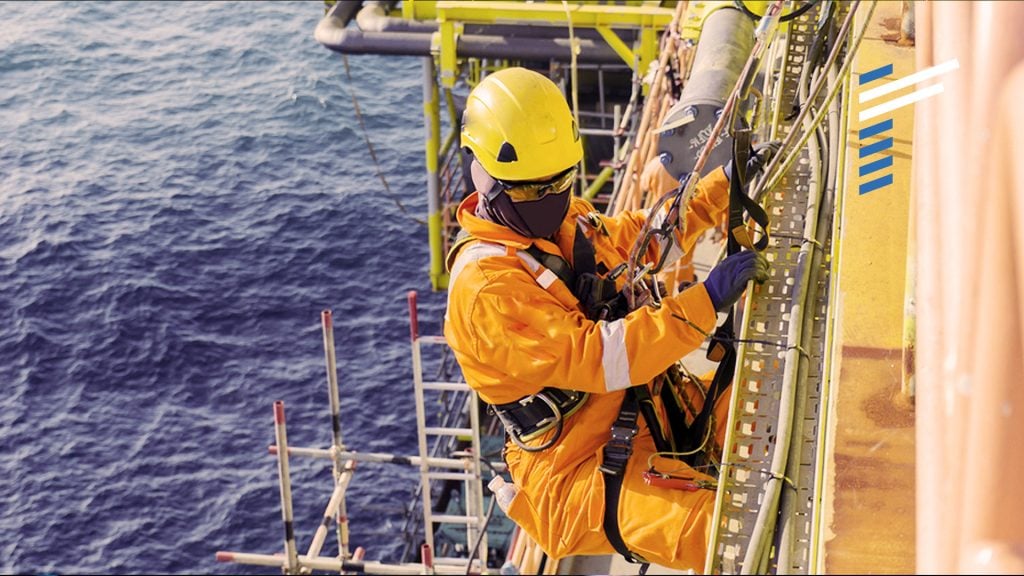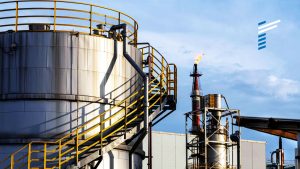At a Glance
- An oil and gas drilling company’s eJSA system was ineffective, leading to disengaged employees and safety risks.
- Renoir helped the company redefine the eJSA system, empowering supervisors and facilitating collaboration.
- The new eJSA system reduced the time spent on safety reviews, improved awareness and engagement, and introduced KPIs to track performance.
Background
Our client is one of the leading land and offshore platform drilling contractors headquartered in a North American country. They are primarily involved in drilling oil and gas wells for exploration and production companies.
The company also offers a full range of integrated technologies, including advanced engineering software and autonomous directional drilling and wellbore placement, that can optimise drilling performance.
The company had previously engaged Renoir on projects to redefine its Change Management process and transform its engineering department to better collaborate with the operations team to address long-standing issues with the process of modifying the company’s drilling rigs.
Analysis
The company’s electronic Job Safety Analysis (eJSA) system required field workers to review specific safety procedures before or after a task and confirmed that the procedures were signed off and submitted but did not ensure that they were followed. There were no audits to check that workers were following the correct safety procedures.
In addition, pre-job safety meetings, which were supposed to teach safe working procedures, were ineffective. Employees were disengaged and did not pay attention during these meetings. There were two main reasons for this:
- eJSAs covered all potential safety hazards, resulting in lengthy discussions during pre-job safety meetings, which could take up to 45 minutes to cover just one hazard.
- The delivery approach for eJSAs varied from rig to rig across the company, with eJSAs either being read, highlighted, or summarised, with little to no active engagement from the crew.
In summary, the eJSA system failed to keep people safe. Despite containing excellent content, it failed to positively influence people’s behaviour.
Project Approach
A cross-functional focus team, comprising leaders from the company’s operations, safety, training, and human resources, established a charter to address this issue. This team was responsible for reviewing and documenting problems with the current system, defining and developing a future (to-be) state, reviewing and developing options for key performance indicators (KPIs) to drive a safety performance and culture.
The team spoke with field personnel to find out what was working and what wasn’t. A telephone survey was also conducted to understand the effectiveness of the eJSA meetings and identify opportunities for improvement.
Based on the survey and interviews, the following conclusions were drawn:
- There is a need to raise awareness to reduce Serious Injuries and Fatalities (SIFs).
- The company should recognise the expertise of its personnel. They have highly experienced personnel working on rigs.
- There is a need for greater focus on desired working practices.
- The company needs to encourage greater involvement and interaction from supervisors. This is because the main cause of a potential SIF within the company is inadequate or ineffective supervision.
- There is a need to instil accountability through personal ownership of a supervisor driven process.


How a well drilling company boosted work order effectiveness


How a well drilling company boosted work order effectiveness
Ready for a change in your organisation?
Implementation
The team began by gaining buy-in from the field personnel. The findings and proposed solutions were then presented to both corporate and field executives, managers, and supervisors.
During the implementation phase, the key areas of opportunity were addressed, resulting in the following outcomes:
- An analysis of the company’s overall safety programme and its alignment with the company.
- Formation of a SIF working group to evaluate the content of all safe work procedures and development of a revised structure focusing on safety critical tasks.
- Development of training programmes aimed at identifying hazards.
- Developed an interactive format for pre-job safety meetings to effectively engage participants.
- Established an audit system to monitor safety critical tasks to ensure compliance with safe working practices.
- Implementing reliable safety metrics to drive performance.
By refocusing the eJSA system on identifying critical behaviours and exposures, the company was able to reduce the risk of incidents across its extensive fleet of land-based rigs.
Results
“Working with Renoir has been a great experience. They have assisted us in establishing consistency and transparency in our processes as well as identifying processes that were or little or no value to us.”
Health, Safety, and Environment (HSE) Manager
Introduced a new Management Control System (MCS) for eJSAs to empower supervisors and hold them accountable.
Improved collaboration between Health, Safety, and Environment (HSE) and Operations personnel.
Reduced the time spent reviewing eJSAs by focusing on SIF events rather than all potential hazards.
Introduced an interactive, supervisor-led pre-job safety meeting to improve awareness and engagement.
Introduced Key Performance Indicators (KPIs) that are tracked on company-wide dashboards.
*We have intentionally omitted client-specific details to uphold strict confidentiality.
How can you improve the performance of your teams and company?










